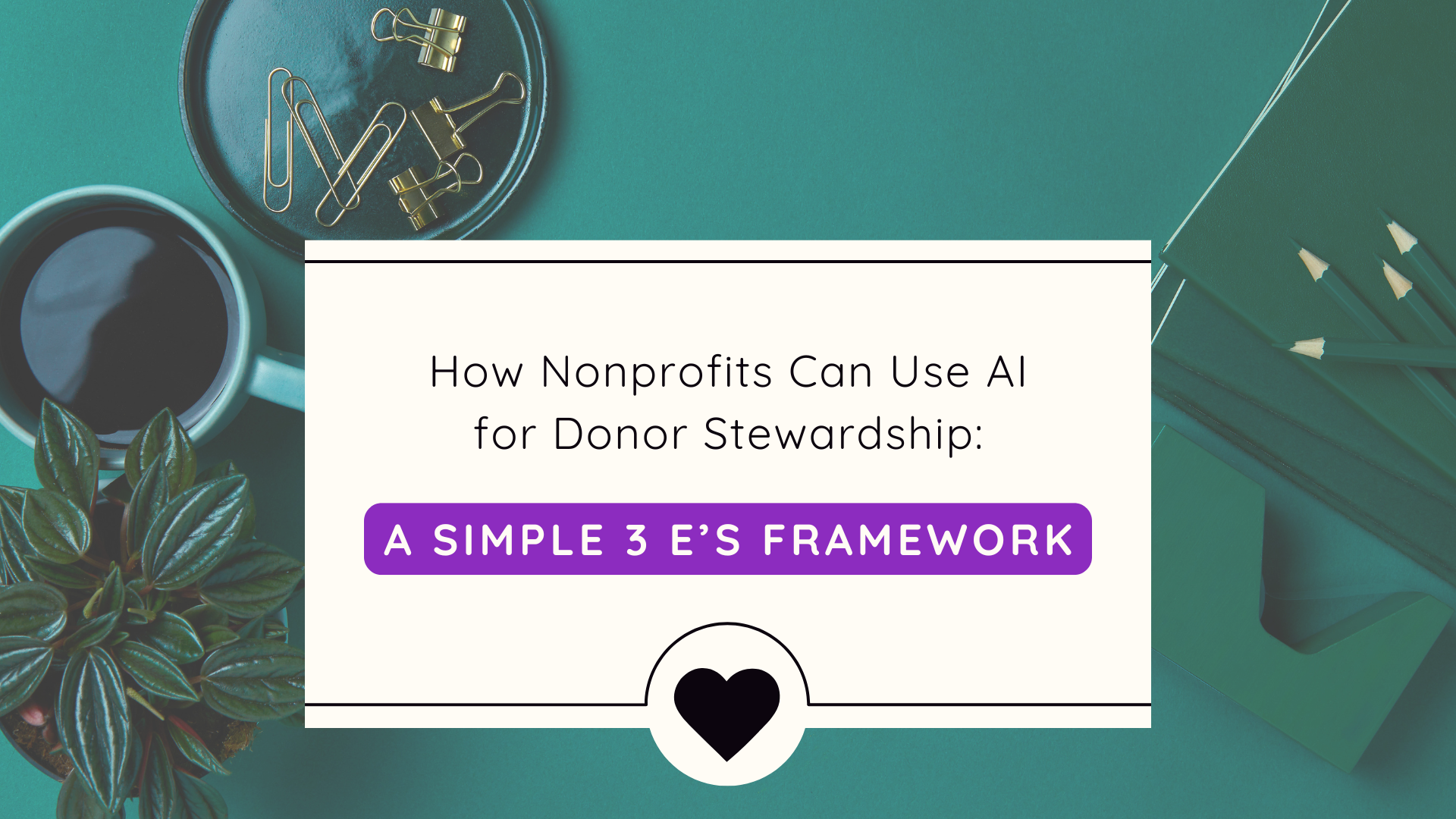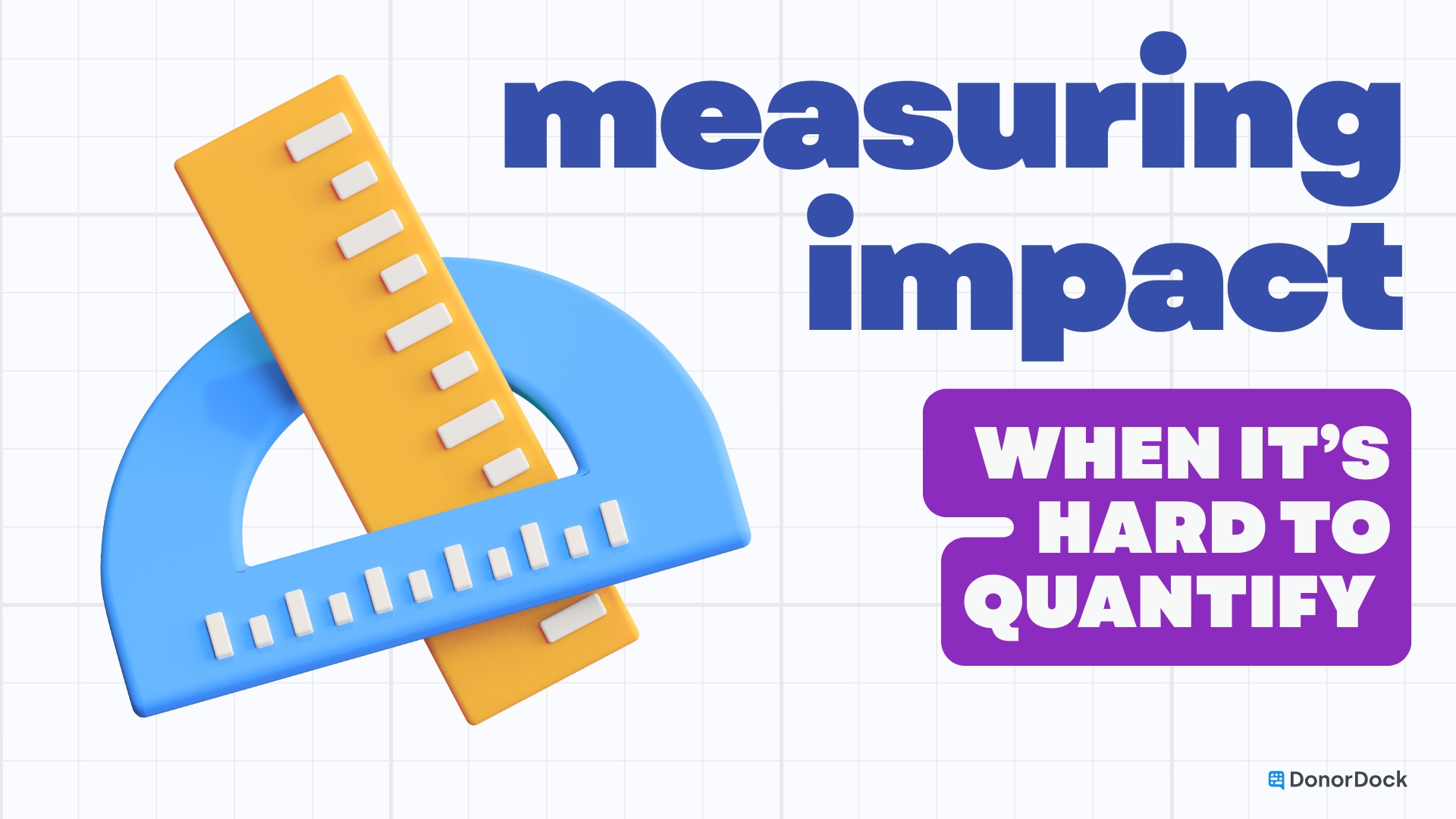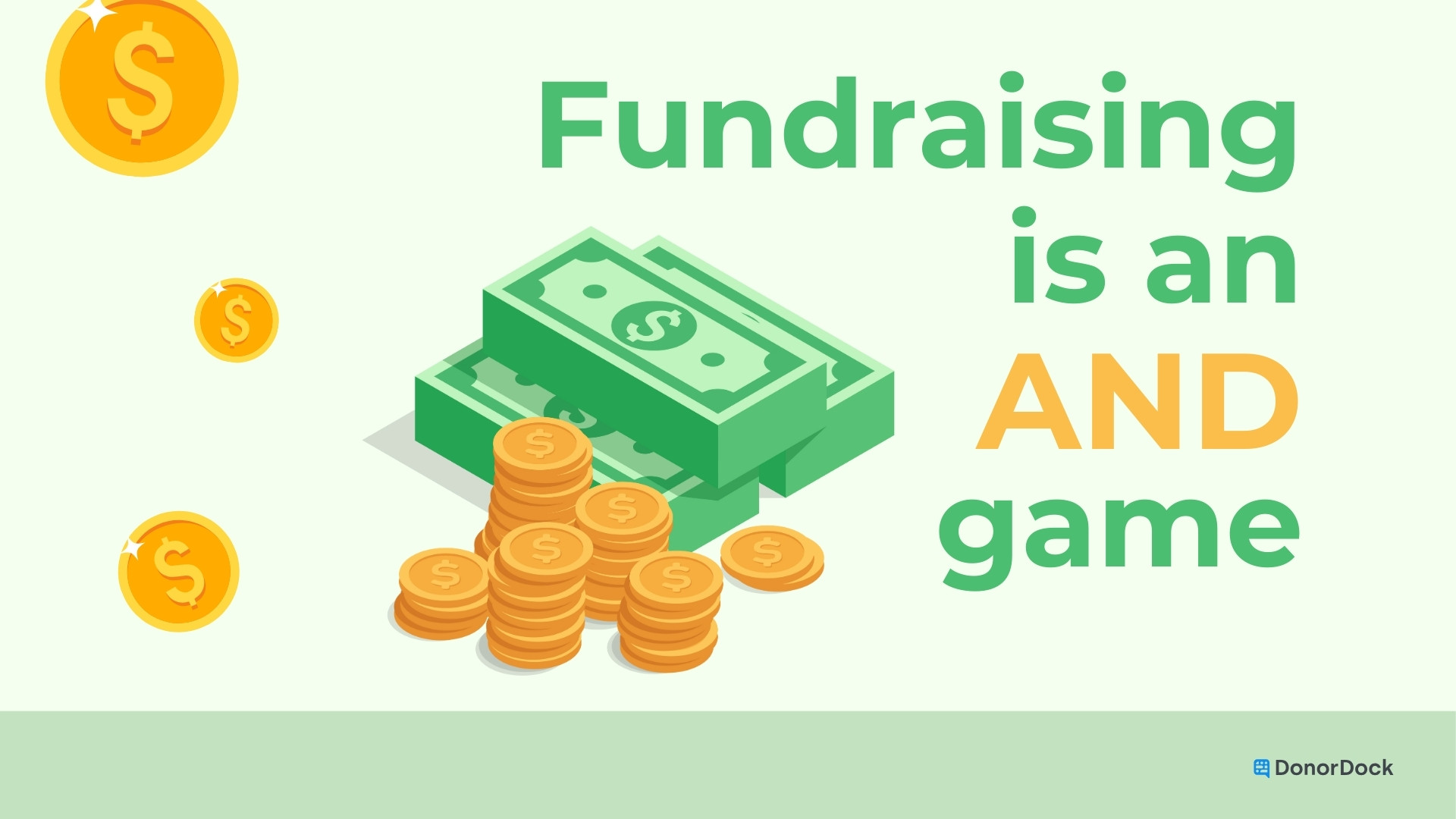Finding and cultivating Major Donors can be a game-changer for your nonprofit. With 88% of funds coming from just 12% of donors, these key supporters are often the backbone of most fundraising.
In this article, you’ll learn how to spot potential major donors within your current base, create personalized plans that speak to their passions, and use technology to streamline your efforts.
Ready to build lasting relationships with those ready to make a big impact.? Let’s start building those crucial connections today!
On Average, 88% of funds come from just 12% of donors
What is a major donor?
Major donors are typically individuals who believe deeply in your cause and choose to invest substantially in its success. These donors give significantly more than your average supporter.
No set amount makes a donor a major donor, as it varies by organization. For small or startup nonprofits, a gift over $1,000 is likely to be considered a major gift; however, for larger organizations, a major donor might be someone who gives $10,000, $50,000, $100,000, or more.
It’s important to remember that major donors add more than just financial value to your nonprofit! Through matching gifts programs, inspirational giving at key moments, and getting involved as volunteers, board members, or event attendees, major donors have the potential to inspire others to give and volunteer with your nonprofit!
So, how do you find and cultivate major donors?
6 steps to build your major donors program
1. Define major gifts for your nonprofit
Before you start looking for potential donors, it’s important to decide what, for your nonprofit, counts as a major gift. Are you an organization that is significantly impacted by gifts of $1,000 or more? Your strategy will look different than a nonprofit soliciting $50,000 donations.
Dive into your donor data and look for trends in giving.
Pull out the largest gifts made to your organization over recent years. Make sure to take into consideration recurring gifts made over a year. A donor giving $100 a month could fall into the category of a major donor, even though they aren’t giving major one-time gifts.
Look at the range of gifts and remove any outliers that may skew your results. If you’re a smaller nonprofit, maybe your range over the last few years fell between $1,000 to $5,000.
Now, decide where in that range you’d like to set your standard for major gifts asks. If your ask is too low, you’ll miss out on funds donors would willingly give. However, donors also won’t give if your ask is too high and they can’t afford it.
2. Assign a point person
Even if you don't have the resources for a full major gifts department, assigning someone to manage major donor prospects is still important. Clarity around who “owns” major donor outreach is key to having a successful major donor program. Work with your marketing and communications teams to ensure everything runs smoothly If you’re a team of one, then your point person.
3. Identify and qualify your major donor prospects
Your point person should focus on a select group of high-potential donors. By concentrating on a smaller, qualified group, you can build deeper, more personal relationships with those most likely to donate. As your program grows, you can gradually include more prospects who may need additional nurturing to become major donors.

Using your donor database to identify major donors
Analyzing your existing donors can uncover hidden gems within your community. Look for patterns in giving history and engagement.
Giving history
- Consistent giving: Donors who have made regular donations over time, even if they are smaller gifts, demonstrate strong loyalty and commitment to your cause.
- Gift size increases: Donors whose gift sizes have gradually increased may be open to making even larger donations in the future.
- High single gifts: Identify donors who have made one or more spike-up donations.
- Planned giving: Those who have expressed interest in planned giving (e.g., bequests) are often strong candidates for major gifts.
Engagement
- Length of relationship: Long-term supporters with a history of involvement are more likely to transition into major donors.
- Personal ties to mission: Donors who have a personal connection to your cause (e.g., family, experiences, or deep passion) may be more motivated to give at a major donor level.
- Event participation: Donors who regularly attend your events, volunteer, or participate in campaigns show a deeper connection with your organization.
- Personal interactions: Review records of meetings, calls, or personal interactions with the donor, as these can indicate a stronger relationship and readiness for cultivation.
Using wealth screening tools
To better pinpoint those who might give generously, think about using wealth screening tools that sift through wealth data. These platforms help identify individuals within your supporter base who have the financial capacity to make significant contributions by analyzing external data.
- Wealth indicators: Data points such as real estate ownership, high-profile job titles, or involvement in philanthropic boards can signal a higher capacity to give.
- Public donations: If a donor has given large gifts to other nonprofits, they might be willing to do the same for your organization.
This method not only streamlines the identification process but also ensures you're investing time in prospects who have the financial capability to contribute at a higher level—maximizing both efficiency and effectiveness in your fundraising strategy.
4. Create a cultivation plan for potential major donors
Building strong relationships with potential major donors requires a personal, thoughtful approach. Every major gift comes from someone motivated not only by their own passions and interests, but also by their connection and relationship with you and your organization.
This is where Moves Management comes in!
Moves Management is a systematic approach to cultivating relationships with potential donors, guiding them from initial interest to making major gifts, and keeping them engaged with your organization long-term.

Tailoring your outreach to match a donor's interests and communication preferences, and developing a meaningful relationship makes a lasting impact.
For example, if a prospect is passionate about animal welfare, invite them to visit your rescue center or rehabilitation facility. Show them the impact their support could have on animals in need. This helps them connect to your cause. However, to connect to them personally, you could ask them to go for a walk. If they have a dog, invite their dog to join. This connects you in a meaningful way bridging what matters to them and what matters to your organization.
Effective cultivation involves engaging on multiple levels — whether through handwritten notes, phone calls, invites to events, or one-to-one meetings. These personal touches show you value them as an individual and their partnership, making it more likely they'll become major donors when the time is right.
5. Crafting your strategy for soliciting major gifts
Build a relationship first
Before asking for a major gift, make sure you first follow through on your cultivation plan. It’s important the relationship is established before making a big ask.
Choose the right time and place
Timing is everything. Arrange an in-person meeting in a comfortable setting, whether it’s their office, home, or a coffee shop. Avoid rushed or impersonal settings like phone calls or emails for the initial ask.
Express gratitude and impact
Start the conversation by thanking them for their past support or involvement, and share how their contributions have made a difference. Use real examples to demonstrate the impact.
Example: “We truly appreciate your past contributions. Thanks to your support, we’ve been able to [insert achievement].”
Present the need and vision
Explain the specific need and how their major gift can make a transformative impact. Align the ask with their interests, so they see how their support will further their own values and goals.
Example: “We’re embarking on an exciting new initiative to [insert project], and we believe it aligns perfectly with your passion for [insert interest]. Your support can help us reach our goal and create lasting change in this area.”
Make the ask clearly
Be direct and clear in your request, specifying the amount you’re asking for and what it will achieve. Avoid vague or overly general asks.
Example: “We would like to ask you to consider a gift of [$X] to help fund this project. With this amount, we will be able to [insert impact].”
Give space for questions
After making the ask, give them space to think and ask questions. Be open, listen carefully to their concerns or thoughts, and be prepared to answer with confidence and clarity.
Show flexibility
Offer options for how they can give. Some may prefer pledges over time, gifts of stock, or naming opportunities. This shows you're respectful of their capacity and giving preferences.
Example: “We’d be happy to discuss different ways you can support this project, whether it’s through a one-time gift, a pledge over several years, or other forms of contribution.”
In essence, asking for significant support goes beyond just making an ask; it’s about creating connections and showing shared goals. Remember: every conversation is a chance to learn what inspires your potential donors to give and make a difference.
6. Stewarding major donors
You’ve built a relationship, made the ask, and secured a donation, but your relationship with a major donor doesn’t end there. Now, is the time to steward that donor relationship!
Thanking your major donors
Acknowledging major donors isn't just about good manners—it's key to strengthening your relationship with them. A personal thank-you note or phone call shows genuine appreciation and makes a lasting impression.
Take the time to highlight how their gift has directly impacted your cause and the good they are doing in the world through giving. This turns a simple "thank you" into a powerful reminder of why they chose to support you.
For tips on how to meaningfully acknowledge your donors’ gifts, check out these donor appreciation strategies.
Continue engaging major donors
It’s important to remember that appreciation doesn’t end with the first thank-you! Sending out nurture emails helps you to show integrity, build trust, and grow your relationship.
Regularly sharing success stories and updates shows donors the impact of their support and keeps them engaged. Frequent communication builds trust, strengthens their connection to your organization, and encourages further involvement, whether through more donations or advocacy.
Using a CRM to manage major gift programs
From tracking donations, personalizing communication, and boosting overall fundraising success, a CRM (Customer Relationship Management) system is an important tool in your nonprofit’s major gifts arsenal.
DonorDock is a CRM designed with nonprofits in mind and has built-in moves management tools.
1. Streamline donation tracking
With DonorDock, managing donation data is easy. You can track donor activity, giving patterns, and progress toward goals in one centralized platform. This ensures that your nonprofit can spot trends or issues quickly, adjust strategies, and stay on top of fundraising goals.
2. Enhance donor communication
Personalize outreach at scale with DonorDock. With a donor’s history, interests, and past contributions all in one place, it is easy to segment donors and send tailored messages that strengthen relationships. This personal touch keeps major donors engaged and shows them how their support makes an impact while keeping their interactions all in your database.

3. Boost fundraising efforts
With data-driven insights, your nonprofit can make smart decisions and refine its strategies. From identifying potential major donors to improving the planning of fundraising events, DonorDock allows your team to operate more effectively and make smarter decisions.
By leveraging a CRM, nonprofits can easily manage major gift programs, improving donor engagement and maximizing fundraising potential.
{{donor-outreach-cta="/components"}}
Conclusion
Major Donors can be your nonprofit's game-changer. These donors often provide most of your funding, making their relationships critical. When building your major donor program start with defining major gifts and assigning a point person. This gives your program clear direction and purpose.
Use your donor data and wealth screening tools to find potential donors, and create a plan to cultivate those relationships before making an ask.
After a successful ask, you’ll move into the donor stewardship phase. It’s important to thank donors and send regular updates to keep them engaged.
With the right strategies and tools, you can strengthen donor relationships and boost your nonprofit’s impact. To streamline your efforts, use a CRM like DonorDock to track donations, improve communication, and make fundraising more efficient.













